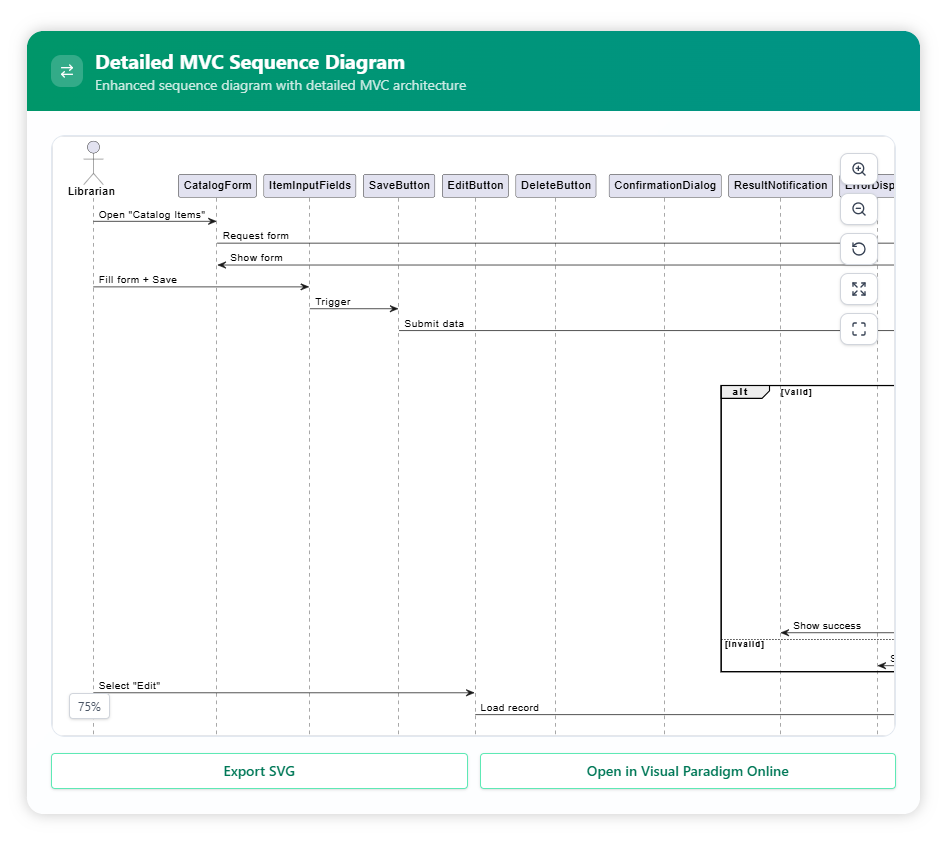Now Reading: Library Catalog Items Example | AI Sequence Diagram Refinement Tool
-
01
Library Catalog Items Example | AI Sequence Diagram Refinement Tool
Library Catalog Items Example | AI Sequence Diagram Refinement Tool
In a library environment, the catalog is the backbone that connects readers with books and resources. The Catalog Items use case illustrates how a librarian or patron views, validates, and manages catalog records. Using the Sequence Diagram Refinement Tool, this everyday interaction can be transformed into an MVC sequence diagram that highlights how the user interface communicates with the underlying catalog services.
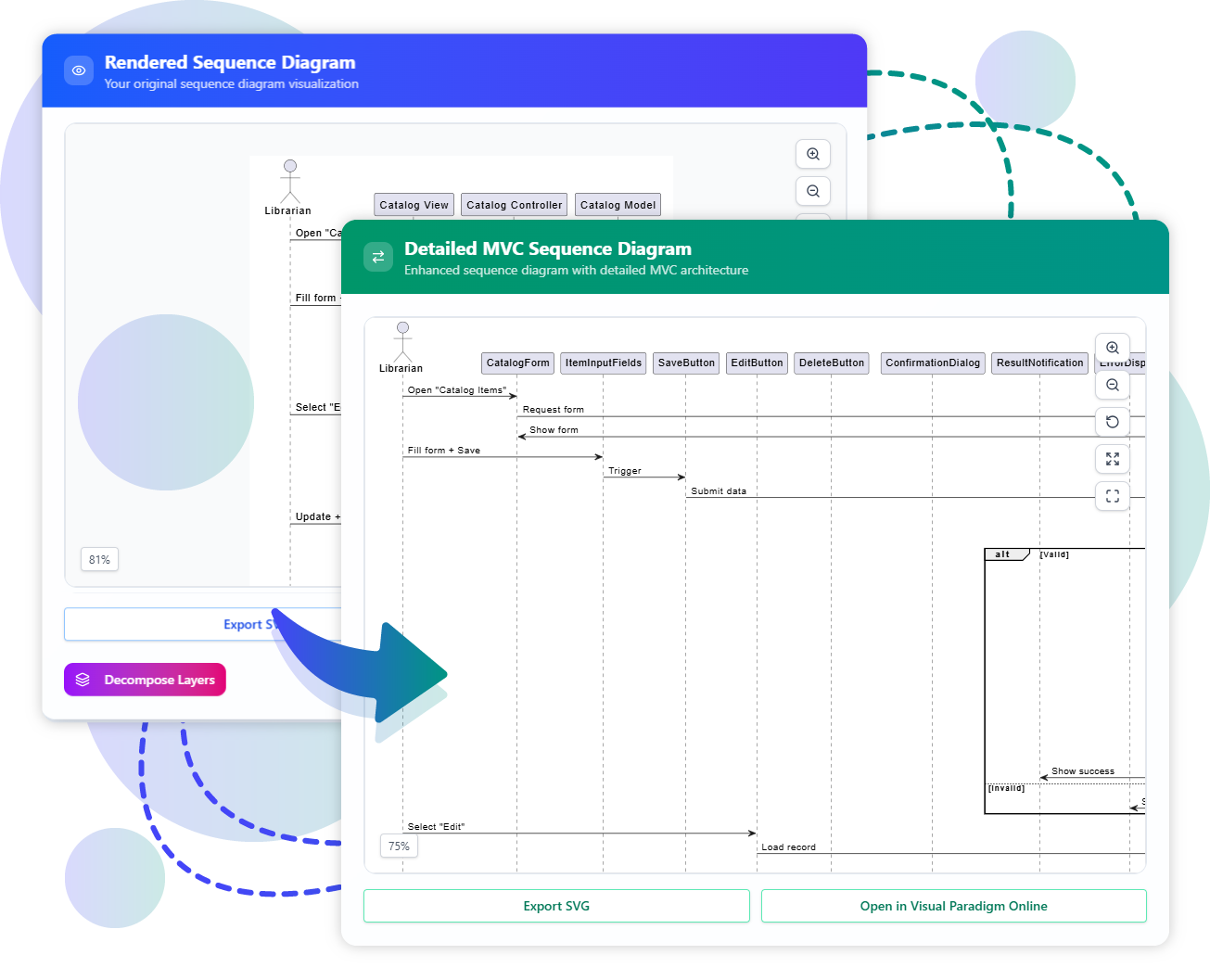
01 | Diagram Input
Begin by entering your sequence diagram code (Mermaid or PlantUML) that represents catalog operations, such as displaying items or submitting forms. You can also start fresh by generating one with the MVC System Architecture Generator instead of writing it manually.
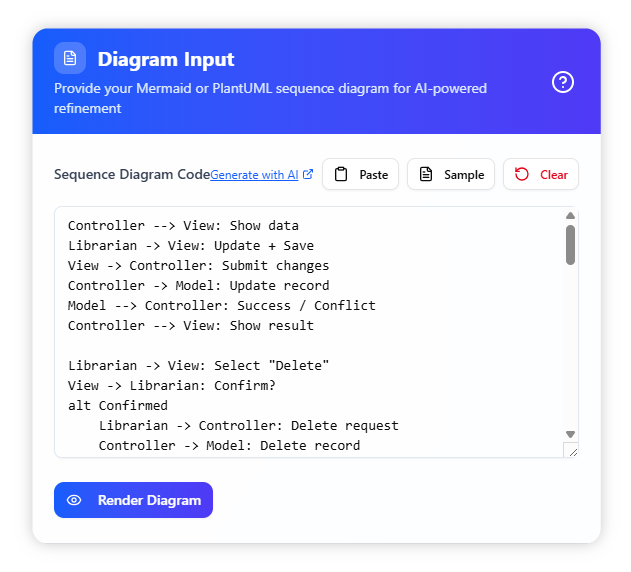
Sequence Diagram PlantUML Example:
@startuml actor Librarian participant "Catalog View" as View participant "Catalog Controller" as Controller participant "Catalog Model" as Model Librarian -> View: Open "Catalog Items" View -> Controller: Request form Controller -> View: Show form Librarian -> View: Fill form + Save View -> Controller: Submit data Controller -> Model: Save record Model --> Controller: Success / Error Controller --> View: Show result Librarian -> View: Select "Edit" View -> Controller: Load record Controller -> Model: Fetch record Model --> Controller: Record data Controller --> View: Show data Librarian -> View: Update + Save View -> Controller: Submit changes Controller -> Model: Update record Model --> Controller: Success / Conflict Controller --> View: Show result Librarian -> View: Select "Delete" View -> Librarian: Confirm? alt Confirmed Librarian -> Controller: Delete request Controller -> Model: Delete record Model --> Controller: Success / Fail Controller --> View: Show result else Cancelled View --> Librarian: Abort end @enduml
02 | Rendered Sequence Diagram
Once you click Render Diagram, the tool visualizes your catalog sequence. At this stage, you may save the preview as an SVG or open it inside Visual Paradigm Online for adjustments. To move into AI-powered refinement, simply proceed with Decompose Layers.
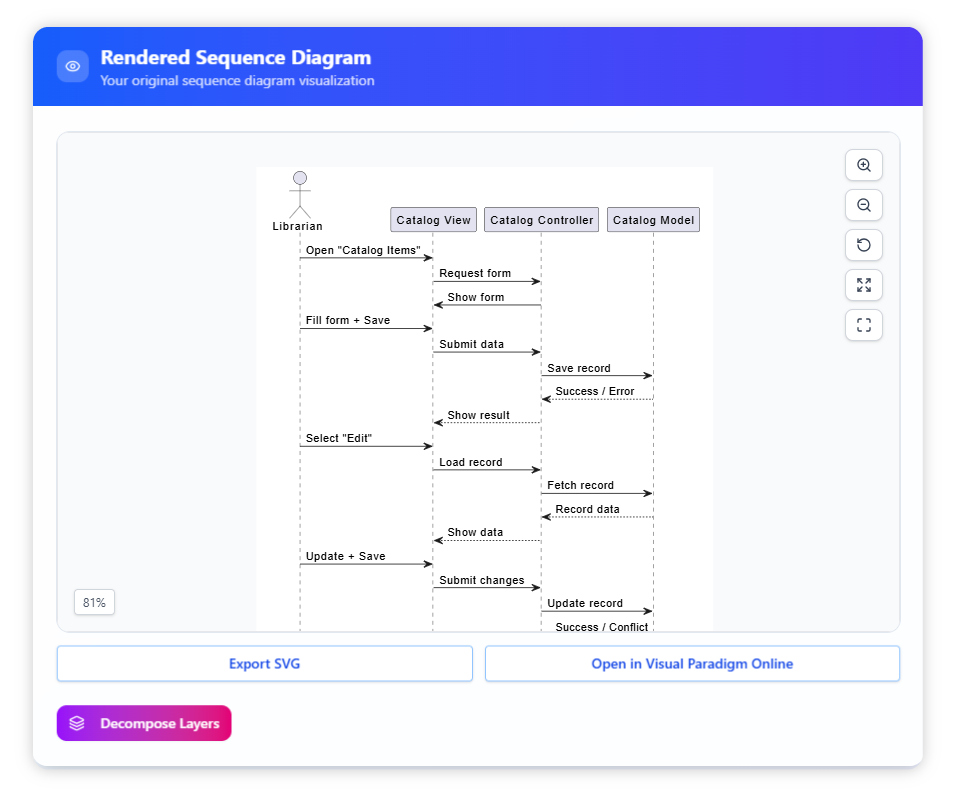
03 | Decomposed Architecture Layers
The AI examines the interactions and organizes them into distinct roles. For this case, it might identify:
- View Objects: CatalogViewController, FormRenderer, FormValidator, …
- Model Objects: CatalogRepository, CatalogService, PersistenceLayer, …
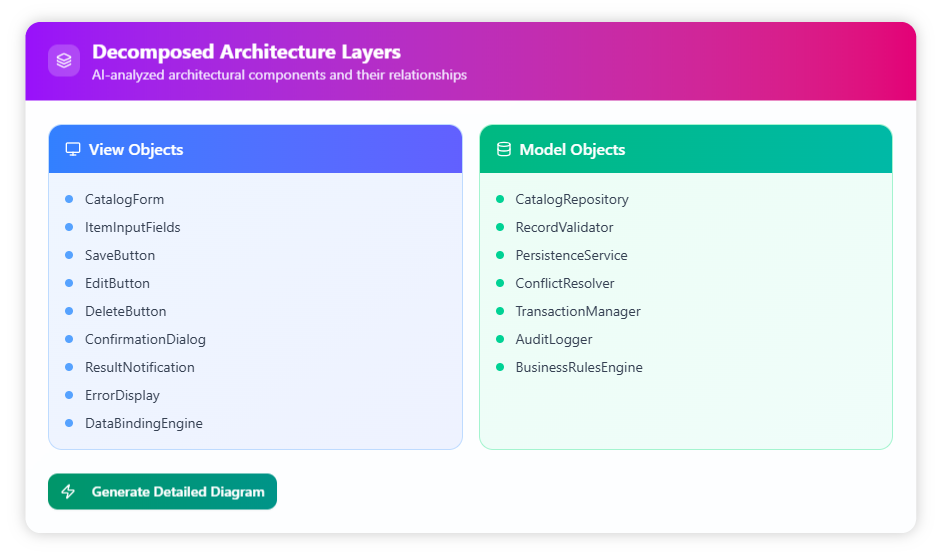
04 | Detailed MVC Sequence Diagram
A more elaborate sequence diagram is then generated, showing how forms and views coordinate with backend services and the persistence layer. This refined version can be exported in SVG format or further shaped in Visual Paradigm Online’s editor.
